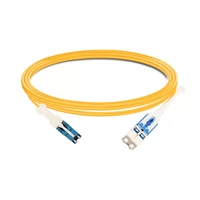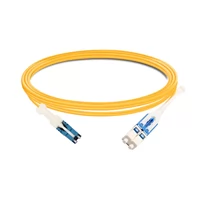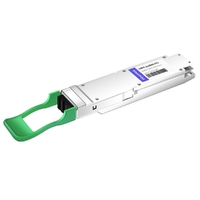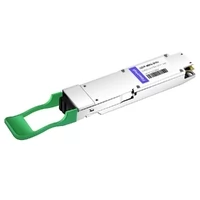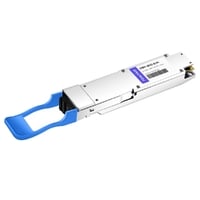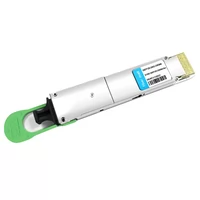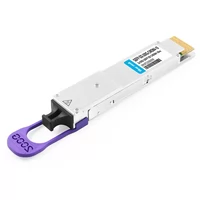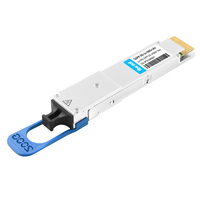The CS Connector is crucial for ensuring smooth communication and data exchange between various systems in today’s interconnected world of technology. This guide is intended to help beginners and experienced professionals gain a deep understanding of the CS Connector by explaining its functionality, design, and application in detail. By looking into how it can be configured and deployed or integrated with other components, this document will enable readers to appreciate more about the CS Connector and how it can enhance interoperability within complex IT environments. It will also provide some best practices on what to do when faced with challenges while using this platform and their corresponding solutions so that users can benefit from it. Whether you are an IT Manager, Systems Engineer, or Technology Consultant, there is no better way to learn all these than reading through this article, which offers tips on reducing size without losing features.
Table of Contents
ToggleWhat is a CS Connector and How Does it Work?
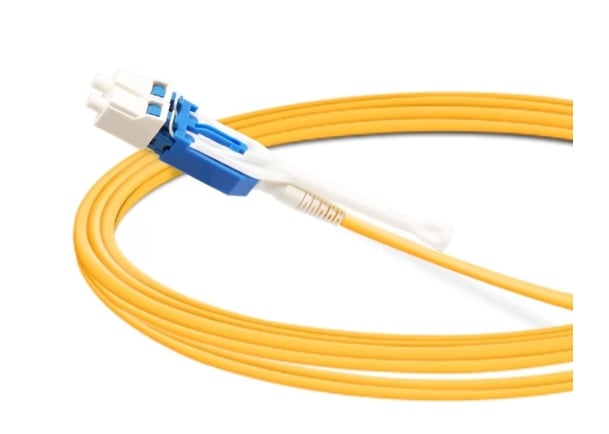
Introduction to CS Connector
The CS Connector is a middleware component that works as an intermediate program to help different parts of IT systems talk to each other and share information. Essentially, it does this by creating uniform interfaces that allow software applications to run on various platforms and hardware devices using different protocols to communicate seamlessly. For instance, the CS Connector ensures exact and fast data transfer between related systems by converting, routing, and connecting messages together via different protocols. This ability becomes very important in such difficult environments where there could be many interdependent applications because it cuts down integration overheads, with the end result being improved system performance, particularly when working with VSFF connectors.
Key Features of CS Connector
- Interoperability: The CS Connector strongly supports many data formats and communication protocols to ensure smooth integration of dissimilar systems.
- Scalability: The CS Connector can handle different workloads and scale well to meet high-level enterprise data exchange requirements without affecting its performance.
- Security: It uses advanced security features, such as data encryption, authentication, and access control, while transmitting sensitive information.
- Flexibility: Through its architecture, which can be configured, the CS Connector may easily adapt or be customized based on particular organizational needs and integration scenarios.
- Reliability: The CS Connector is designed with error handling and fault tolerance mechanisms that guarantee continuous and correct data transfer even if some components fail during this process.
- Monitoring and Analytics: It has rich monitoring tools coupled with powerful analytics capabilities for tracking system performance, data flow monitoring, and quick identification of potential problems.
Advantages Over Traditional LC Duplex
- Higher Data Rates: This makes it perfect for modern applications requiring large amounts of data.
- More Compactness: It is smaller than other connectors, so more ports can be packed into a limited space in a data center.
- Better Signal Transmission: The CS Connector has been designed with more advanced technology, which lowers its insertion loss and, in turn, improves signal transmission efficiency.
- Easier Cable Management: It is easier to manage cables with the CS connector than any other type due to its small size and ease of installation.
- Future Proofing: The CS Connector has considered future standards when being designed; hence, it will always support any emerging technologies, thereby making it more reliable than LC Duplex connectors, which are fixed at one point in time.
How to Choose the Right CS Connector for Your Application?
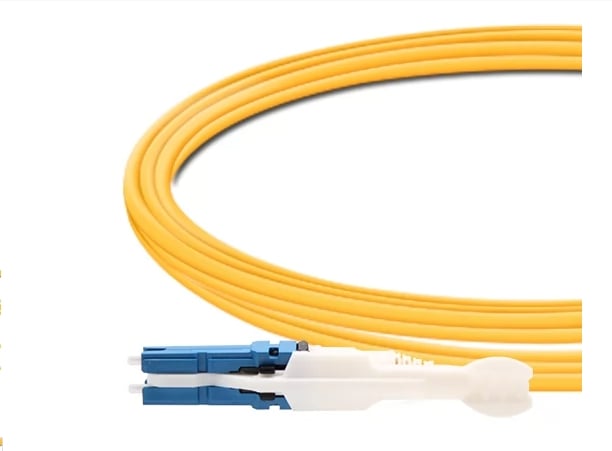
Understanding Different Patch Cable Types
To choose the right patch cable type for your application, you need to take some important things into account to guarantee the best performance and compatibility. The main types of patch cables differ in terms of construction, application, and performance parameters.
- Singlemode vs Multimode: Singlemode patch cords are designed for long-distance data transmission; hence, they feature small core sizes that ensure minimum signal loss over longer distances, such as those supported by high-performance connectors like Senko CS fiber connectors. On the other hand, multimode patch cords have larger core diameters, making them perfect for short-distance applications where bandwidth is an important factor.
- Types of Fiber Optic Connectors: Different connector types, including SC, ST, LC, and MPO/MTP, are used depending on specific network needs. LC connectors are known for their small size and high port density, while MPO/MTP connectors can be used in high-density environments because they can accommodate up to 12 or 24 fibers within a single connector.
- Cable Jacket Material: The material used to make a cable jacket can affect its durability and suitability for different environments. PVC jackets are commonly used due to their flexibility and cost-effectiveness, whereas LSZH (Low Smoke Zero Halogen) jackets are employed in areas where fire safety or low toxicity levels are required.
Once you know these differences and match them with what your network requires, you will be able to identify the most appropriate patch cord type that guarantees reliability and efficiency in connectivity.
Comparing Single Mode Fiber and Multimode Fiber
When comparing single-mode fiber (SMF) with multimode fiber (MMF), several key factors can be distinguished from current research and expert sources.
- Core Diameter: SMF typically has a smaller core diameter of about 8-10 microns, which enables only one path for light and is suitable for long-distance data transmission that often exceeds 10 km. In contrast, MMF has a larger core diameter of between 50 and 62.5 microns, allowing multiple paths for light and, hence, more appropriate for short distances below 2km.
- Bandwidth and Data Rates: Single-mode fibers are capable of higher bandwidths and data rates, which are useful in telecommunications industries that need high-speed long-haul communications. Though also supporting high data rates, multimode fibers suffer mostly from modal dispersion and are thus best suited for short-range communications within buildings or campus networks.
- Cost and Implementation: When it comes to cost, there may be some differences between these two types considering their components, such as transceivers where sometimes SMFs could be expensive due to the precision required during manufacturing, unlike MMFs, which do not require much precision but this should not deter us because the more we need large capacity over longer distances then SMFs become cheaper. MMFs, on the other hand, have initial equipment costs lower than those associated with installing an SMF system; this makes it easier for local area network (LAN) applications.
These differences enable network designers to select appropriate systems based on distance, data rate, and budget requirements without affecting network performance or reliability.
Factors to Consider: Density and Push-Pull Tab
In selecting fiber optic cables and connectors, technical aspects are very important for optimizing performance, particularly in high-density environments and for easy maintenance demanding applications.
- Density: The primary thing to consider is density in data centers. High-density fiber optic connectors contain many fiber strands in one connector, maximizing space. When this is done, there will be more data transfer rates within small areas, reducing the complexities of managing cables and showing how usable and efficient CS fiber connectors are. Network designers must consider space limitations while looking at connector types that can scale with their operation needs, known as VSFF (Very Small Form Factor) connectors.
- Push-Pull Tab: Designed to make fiber optic connector installation or removal easier, the push-pull tab allows disengagement without much effort, which might damage the fibers themselves or entire connections. This feature works best where accessibility is poor due to the tightness created by having many devices in a small area; hence, it should always be used because it maintains good connectivity throughout networks besides being convenient for use. Handling errors can easily lead to problems with connection when using these connectors, which lies in their exceptional design performance.
Density, together with push-pull tabs, helps system administrators achieve higher efficiency levels in their optical communication networks, thus making such infrastructures more reliable than ever before. These two factors significantly affect fiber optics’ scalability, care, and modernization.
How to Properly Install a CS Connector?
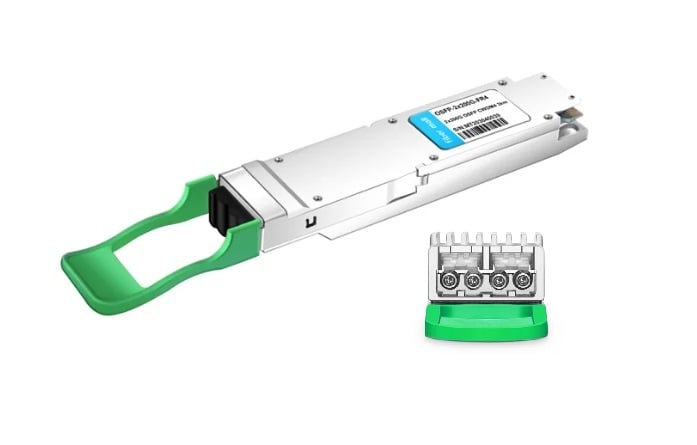
Step-by-Step Installation Guide for CS Connector
- Collect Tools and Materials: Ensure you have a CS connector, optic fiber cables, cleaning tools, and appropriate fitting tools.
- Clean the Ends of Fiber: Use cleaning tools for optic fibers to clean the ends of fiber completely; this will prevent connection issues caused by dirt or imperfections.
- Remove Fiber Coating: Carefully remove the protective coating from the fiber with a fiber stripping tool to reveal the bare glass fiber, which typically shows about 10-15 millimeters.
- Cleave Fiber: Utilize a precision cleaver on a single-mode fiber to achieve a perpendicular and flat end face on the exposed area so that it can work well with small form factor connectors.
- Inserting fiber into the connector: Ensure you have inserted cleaved fiber into the CS connector so that alignment is done correctly.
- Lock the Fiber: You should use a crimping tool to ensure the fiber does not move in the connector.
- Check the Connector: Visually inspect the end face of the fiber with a fiber scope to ensure it is correctly seated and free from defects.
- Do One More Clean: Clean the connector end face again before connecting to the patch panel or optical device.
- Test It Out: Use testing equipment appropriate for verifying connection integrity and performance.
If you follow these guidelines when installing a CS connector on your optical network, you will have a dependable and performing installation.
Common Installation Mistakes to Avoid
- Insufficient Cleaning: One of the most common mistakes is failing to clean enough at the fiber ends. The residual dirt, dust, or debris can largely reduce the performance of the optical network. Before and after installation, always remember to clean both the fiber ends and connectors properly.
- Improper Fiber Handling: Any physical harm to the fiber, such as breaking it or causing signal loss through bending too much or using big force, is caused by its poor handling. Ensure you follow minimum bend radius recommendations and safety precautions during installation every time without fail.
- Incorrect Fiber Stripping and Cleaving: Poor connections result from improper stripping and cleaving of fibers. To obtain a clean perpendicular end face, the calibration of the strip tool should be correct, while cleaving must be done with a precise tool on the fiber itself.
Installation Tools and Best Practices
- Fiber Optic Cleaning Kit: It ensures all fiber ends and connectors are dirt-free.
- Precision Stripping Tool: This tool removes the coating of a fiber without damaging its core.
- Cleaver: A cleaver is a tool that cuts fibers at perfect right angles to their axes so they can be joined together neatly.
- Fiber Scope: An instrument used for inspecting the end face of an optical fiber, usually equipped with magnification lenses and light sources to illuminate it for better visibility.
- Insertion Loss and Return Loss Testers: These testers measure the signal strength attenuation incurred by particular devices or cables and evaluate how well signals pass through them in two opposite directions, respectively.
- Cable Management Tools: Such as routing guides, cable trays, and tie wraps help keep your installation neat-looking while minimizing security risks associated with loose or disorderly cabling systems.
- Personal Protective Equipment (PPE): Safety gear operators wear, including gloves and eye protection. It safeguards against coming into contact with harmful substances during work processes, thereby reducing the chances of accidents around staff members involved in various activities related to fiber optic installations.
By following these guidelines and using appropriate equipment, you will greatly increase the dependability and effectiveness of setting up optical networks.
What are the Benefits of Using a High-Density CS Connector?
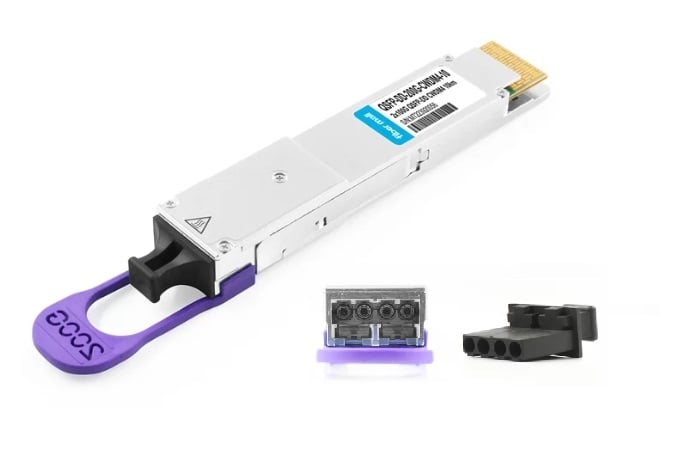
Improved Cable Management
Network installations can benefit from these patch connectors, which use high-density CS connectors. They were made smaller and more effective so that they could be used in network equipment with many ports or a high number of connections. For this reason, racks and cabinets take up less space due to their compact size, thus preventing overcrowding and simplifying cable management. Furthermore, because CS connectors are densely populated, it makes it easier to maintain them as well as scale them, which allows for new connections without disrupting other parts of an existing connection among devices on the network. The end product is neat, flexible wiring that supports faster data transfer rates and simpler upgrades.
Enhanced Data Center Efficiency
Increased density CS connectors contribute to more efficient data centers by making the most of space and managing airflow better. When bandwidth and capacity requirements increase, smaller CS connectors can accommodate several more connections in one rack than old-fashioned ones. This reduces power usage because cooling is done better with such optimization. Also, this smaller design cuts down on cable mess so that there are fewer chances for them to block air circulation, which in turn improves the general environmental situation at any given point inside the data center. So, these enhancements establish a foundation for sustainable growth in technology infrastructure reliability within any organization’s IT department while being flexible enough to cater to the future needs of any growing business in terms of storage solutions or network connectivity.
Better Airflow and Space Utilization
Compact Size (CS) connectors enable better flow and usage of area in data centers. They are designed to occupy less space, reducing congestion and significantly improving ventilation as it does away with cable mess. When this neat arrangement of cables is employed, heat is regulated at the optimum level, resulting in better functionality and durability of network devices. Additionally, these connectors have more ports per rack unit, thereby increasing the number of connections that can be made within limited spaces. With energy-efficient cooling methods being supported alongside maximum utilization of available room, a scalable, high-performance environment for data centers can be realized using CS connector systems.
How Does the CS Connector Compare to the LC Duplex?
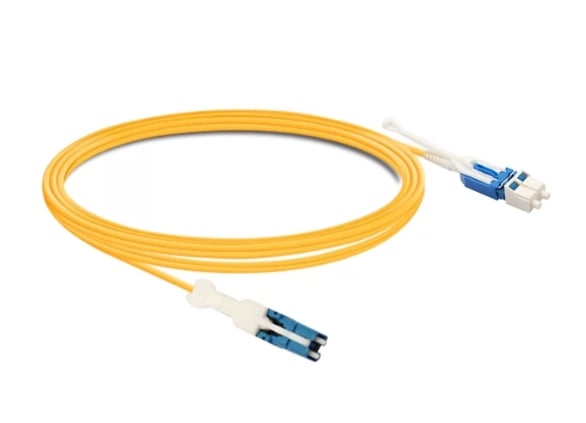
Performance Comparison
Several performance metrics show the benefits of using CS connectors and LC duplex connectors. Initially, they have a smaller form factor than LC duplex connectors, which means you can fit more ports into the same space; this is especially useful in facilities where data centers need to be housed in small areas. This also leads to better cooling since airflow becomes more accessible with smaller devices, ultimately saving energy.
Secondly, the insertion loss is lower, and the return loss is higher for CS connectors than LC duplexes. This implies that signals are transmitted more reliably while less data gets lost along the way – this keeps networks running at their best levels.
Lastly, installation and maintenance become easier with CS connectors. The push-pull design reduces the chances of dropping them during setup or harming them when connecting, making everything faster and more secure. It also becomes easy to manage network infrastructure upgrades whenever required.
Therefore, regarding space efficiency, signal strength, and handling convenience, CS connections outperform LC Duplexes every time, thus making them ideal for any modern data center seeking increased productivity and scalability.
Size and Density Benefits
Regarding compactness and density, CS connectors are very advantageous because they are designed for small form factor environments. Due to their reduced size, they can achieve much higher port densities than the traditional LC duplex connectors. Data centers can support more connections in the same rack space, which is crucial for modern IT infrastructures where space is limited. Higher port density leads to better utilization of available rack space, thereby improving data center efficiency.
Additionally, the CS connector’s design is characterized by its small size, which promotes good airflow management within racks. Cooling is an important element in preventing equipment from overheating and maintaining its performance over a long period. These connectors take less physical space, thus minimizing airflow blockage that would have otherwise led to increased thermal load and lowering cooling costs simultaneously.
In summary, CS connectors are popular in data centers because of their compactness and high port count capability. This allows them to accommodate more connections without compromising on space, cooling, or performance requirements. As such, they become the best fit for next-generation scalable and efficient data center environments.
Use Cases: When to Use a CS Connector
CS connectors are used where space-saving and high port density are required. They are best suited for smaller applications that need to reduce their sizes.
- Data Centers: Modern data centers require solutions with high port density to ensure that the available space is used to its maximum capacity. If operators use CS connectors, a single rack can accommodate more connections, making the infrastructure more scalable and easier to manage.
- Telecommunications: In most cases, there is limited space in telecommunications environments, but performance has to be strong enough. Compact-sized connectors like CS, which also perform well, can only meet such conditions. Additionally, they save space, making it easy for them to manage heat dissipation, hence better cooling.
- High-Performance Computing (HPC): When dealing with computing clusters where large amounts of connectivity are needed along with efficient cooling methods, these types of connectors allow for such requirements without overheating, thus supporting HPC’s high-speed data transfers.
In conclusion, CS connectors work best when you want to save as much space as possible while increasing airflow and achieving a significant number of connections simultaneously.
What Future Trends Can We Expect for the CS Connector?
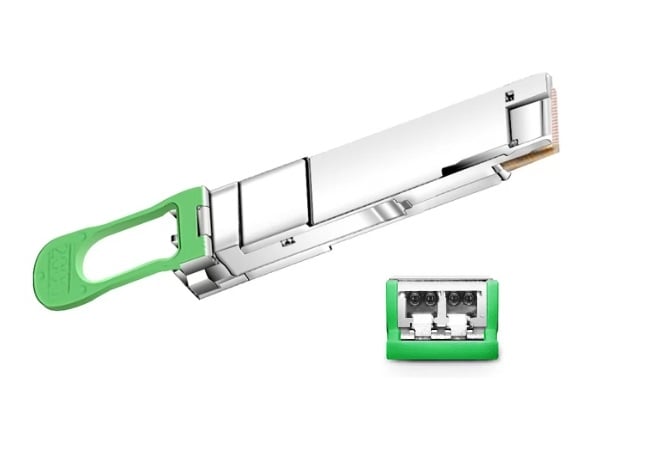
Next Generation CS Connector Technologies
While the requirement for faster data transfer speeds and increased space utilization efficiency continues to rise, next-generation CS connectors are anticipated to adopt new functions. The following are some expectations:
- Greater Data Transfer Rates: The next era of CS connectors will prioritize enabling greater data rates that could achieve up to 400Gbps in transmission speed; this is important since large-scale reductions in size, along with small form factor connectors, are required to meet the growing demands of data centers and high-performance computing.
- Better Thermal Control: Material technology and design advancements would contribute to better thermal regulation, where heat generated by higher transmission speeds needs to be managed; therefore, additional cooling methods will be incorporated for reliability and stability of performance.
- Size Reduction and Higher Port Density: Smaller sizes will still dominate future CS connectors while allowing more ports per unit area. This means more connections can be accommodated within limited spaces, thus optimizing infrastructure efficiency and enabling better scalability in data centers.
To sum up, the next generation of communication systems would not only provide faster rates but also enhance thermal control management while increasing the number of connectivity points, which contributes greatly to the advancement of the telecommunication sector and data centers, among other things.
Impact of 400G and 200G on CS Connector
It’s hard to overstate how much 400G and 200G will change CS connectors. These high data rates require a lot of new technology. It used to be that you only needed good signal integrity for one gigabit per second, but now we need it for four or two hundred. So, there has been some serious innovation around minimizing signal loss through crosstalk with CS connector designs that improved on this greatly by demanding higher-quality performance from them all.
Another thing is that these faster connections have also become more thermally sensitive. For example, in order not to overheat at such speeds as those required by the 400G standard, thermal management within the current CS connectors’ design must be upgraded too, which means they should use advanced cooling materials alongside mechanisms capable of effectively dissipating increased amounts of heat generated during operation in environments where high-performance is expected thus ensuring stability while extending their lifespan accordingly.
Additionally, ports need to get closer together because people want bigger numbers. People always want more connectivity and bandwidth, even when space is limited. Higher-density port configurations allow operators to scale up their networks without requiring additional physical space or power supplies. This can be achieved through using small form factor connector systems like Compact Scrambling (CS) Connectors, which support multiple connections per unit area while maintaining signal integrity at higher data rates required by next-generation data centers and HPCs alike.
I’m saying that moving on from 1Gbit/s was a game-changer for everyone involved. Now, we’re looking at doing even crazier things with our networks – things that were impossible five years ago. The world has changed again; it always will do so eventually… but this time, it’s happening right now!
Role of CS Connector in Expanding Data Center Capacities
The CS connector is vital to data center growth as it satisfies the need for more bandwidth, lower latency, and increased port density. As per most recent industry observations, CS connectors are built to provide high-speed data transmission, which is necessary to cope with current demands by such applications as cloud computing and AI, among others. These connectors allow centers to patch efficiently in high densities, thereby maximizing on-rack space utilization and enabling them to scale up their operations without much physical expansion being required around the facility. Also, these connectors have low insertion loss and high return loss, ensuring strong performance, especially when deployed during extensive network upgrades. In general, the advanced features and design improvements found in CS connectors play a crucial role in supporting continual growth within the capacities of infrastructures in data centers.
Reference Sources
Frequently Asked Questions (FAQs)
Q: What is a CS connector?
A: The CS connector is a next-generation, high-density connectivity connector that enhances cable management in network environments. It performs exceptionally well in fiber optic and transceiver applications and among high-density patch panels.
Q: How does it compare to LC connectors?
A: The CS connector provides a higher-density solution compared to LC connectors. This allows more efficient airflow within racks while doubling the patch panel density, making it an ideal choice for space-saving in crowded network environments.
Q: What are the optical performance benefits of the CS connector?
A: The CS connector provides lower insertion loss with excellent durability for improved optical performance. The shorter ferrule design also ensures better alignment and connection quality, outperforming the LC connectors.
Q: Have other standards like QSFP-DD or OSFP adopted CS?
A: Standards such as QSFP-DD and OSFP have taken up CS connectors for their high-density next-generation networking needs. These two transceiver form factors benefit from the compact size and efficiency CS connectors offer, enhancing their application performance.
Q: What does “double the density in patch panels” mean when referring to CS connectors?
A: Half-size duplex LC can fit double the number of connections into the same space compared to traditional LC duplexes, which means you can connect twice as many fibers using the same footprint with single-mode UPC/APC SC footprint adapters without any loss or impact on performance per port. This results in significant savings on space required, better cable management, and improved airflow across racks.
Q: What advantages does the CS® connector design have regarding cable management and airflow?
A: The CS® connector design is small and efficient, thus creating more space for better cable management while allowing air to flow more efficiently within a rack. This enhances cooling efficiency and overall network performance, which are important for densely populated networks.
Q: What kind of fiber is usually used together with CS® connectors?
A: Single-mode fiber usually used with CS® connectors has UPC polish that ensures high-quality transmission of light signals and minimizes signal loss. These connectors are meant for use in high-performance networking applications where signal integrity is paramount, with the design featuring excellent performance properties.
Q: What part does the CS Consortium® play in developing CS® connectors?
A: The main objective of the CS Consortium® is to bring various industry players together so they can work jointly on matters such as design, performance, and interoperability standards related to these types of connectors. This is done to meet current networking needs.
Q: Where are most CS® connectors deployed in today’s network environments?
A: In modern networks characterized by high-density connectivity requirements that necessitate saving space, improving performance, and managing cables effectively, data centers and telecom enterprises often use reliable, scalable fiber optic connections provided by this type of connector.
Related Products:
-
 3m (10ft) Duplex OS2 Single Mode CS/UPC to LC/UPC Uniboot LSZH Fiber Optic Cable
$17.00
3m (10ft) Duplex OS2 Single Mode CS/UPC to LC/UPC Uniboot LSZH Fiber Optic Cable
$17.00
-
 1m (3ft) Duplex OS2 Single Mode CS/UPC to LC/UPC Uniboot PVC (OFNR) Fiber Optic Cable
$15.00
1m (3ft) Duplex OS2 Single Mode CS/UPC to LC/UPC Uniboot PVC (OFNR) Fiber Optic Cable
$15.00
-
 OSFP-2x200G-FR4 2x 200G OSFP FR4 PAM4 2x CWDM4 CS 2km SMF FEC Optical Transceiver Module
$1500.00
OSFP-2x200G-FR4 2x 200G OSFP FR4 PAM4 2x CWDM4 CS 2km SMF FEC Optical Transceiver Module
$1500.00
-
 OSFP-800G-2FR4 OSFP 2x400G FR4 PAM4 CWDM4 2km DOM Dual CS SMF Optical Transceiver Module
$1500.00
OSFP-800G-2FR4 OSFP 2x400G FR4 PAM4 CWDM4 2km DOM Dual CS SMF Optical Transceiver Module
$1500.00
-
 OSFP-800G-2LR4 OSFP 2x400G LR4 PAM4 CWDM4 Dual CS 10km SMF Optical Transceiver Module
$2000.00
OSFP-800G-2LR4 OSFP 2x400G LR4 PAM4 CWDM4 Dual CS 10km SMF Optical Transceiver Module
$2000.00
-
 QSFP-DD-200G-CWDM4 2X100G QSFP-DD CWDM4 2km CS SMF Optical Transceiver Module
$1100.00
QSFP-DD-200G-CWDM4 2X100G QSFP-DD CWDM4 2km CS SMF Optical Transceiver Module
$1100.00
-
 QSFP-DD-200G-CWDM4-10 2X100G QSFP-DD CWDM4 10km Dual CS SMF Optical Transceiver Module
$1300.00
QSFP-DD-200G-CWDM4-10 2X100G QSFP-DD CWDM4 10km Dual CS SMF Optical Transceiver Module
$1300.00
-
 Juniper QDD-2X100G-LR4 Compatible 2x100GBASE-LR4 QSFP-DD LWDM4 10km Duplex CS SMF Optical Transceiver Module
$1300.00
Juniper QDD-2X100G-LR4 Compatible 2x100GBASE-LR4 QSFP-DD LWDM4 10km Duplex CS SMF Optical Transceiver Module
$1300.00

